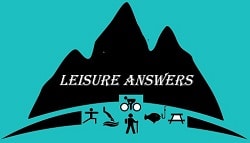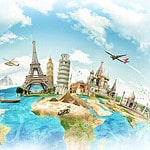Virtual travel and augmented reality are revolutionizing the world of leisure and tourism. Although both technologies offer a glimpse into new and exciting realms, they differ in how they provide immersive experiences.
Understanding Virtual Travel
Technology Involved
Virtual travel utilizes technological advancements in virtual reality (VR) and augmented reality (AR). VR solutions typically involve headsets and immersive environments, while AR incorporates digital elements into the user’s real-world surroundings, often through smartphone applications or wearable devices.
Benefits
Virtual travel offers several benefits:
- Accessibility: It allows individuals unable to travel in person due to physical or financial constraints to experience new destinations.
- Educational Value: VR and AR can provide informative experiences on history, culture, and more, enriching users’ understanding of different locations.
- Environmental Sustainability: Virtual travel doesn’t involve physical transportation so it can reduce the carbon footprint and negative impacts on natural resources.
Limitations
Despite its benefits, virtual travel also has limitations:
- Lack of Sensory Experience: Although the technology can visually replicate real life settings, it is unable to replace the complete sensory experience of actually physically being in a place – such as tastes, smells, and sounds.
- Technology Barriers: Not everyone has access to VR headsets or devices required for AR experiences, which may limit the overall accessibility of virtual travel.
- No Social Interaction: Virtual travel does not offer the same opportunities for fundamental life interactions with locals and other travellers, a significant aspect of traditional travel experiences.
If virtual travel is not your thing under any circumstance then physically visiting your dream location will be your go to. To make the best of your travel experience our guide Discover Your Travel Motivation will help you to plan your perfect vacation.
Exploring Augmented Reality
Augmented reality (AR) enhances the users’ perception of reality by blending digital elements with their real-world surroundings. This technology significantly impacts leisure and tourism, providing unique and engaging experiences for visitors.
Technology Involved
AR technology utilizes various sensors, computer algorithms, and displays to layer and present digital information in the real world. The most common AR devices include smartphones, tablets, and AR glasses, which use built in cameras and sensors to track and recognize the user’s surroundings. Some popular AR platforms include Apple’s ARKit, Google’s ARCore, and Microsoft’s HoloLens.
Benefits
AR offers several benefits in the leisure and tourism industry, such as:
- Enhanced experiences: AR adds interactive digital layers to real world attractions, bringing them to life and providing visitors with memorable experiences. For example, historical sites can use AR to show 3D reconstructions or animated characters that explain the site’s history (Evergine).
- Navigation and guidance: AR wayfinding, the act of navigation, offers intuitive navigational assistance to tourists, making it easy to find desired locations and points of interest.
- Language translation: By overlaying digital text translations in the real world, AR can help tourists overcome language barriers, making their travel experience more enjoyable and accessible.
- Customization: AR allows personalized content and experiences tailored to a tourist’s preferences, enhancing their overall satisfaction with a destination.
Limitations
Despite its potential, AR technology faces some limitations in the leisure and tourism sector:
- Hardware limitations: AR relies on the user’s device and capabilities, and lower-end devices might need more processing power or sensors, resulting in a bad experience.
- Connectivity issues: Many AR applications require a stable internet connection to function, which can be problematic in remote destinations or areas with poor connectivity.
- Content availability: AR experiences’ effectiveness depends on the content’s quality and relevance, and sometimes, there might be a lack of suitable content
Comparing Virtual Travel and Augmented Reality
Virtual travel, powered by Virtual Reality (VR), transports users to distant locations, allowing them to explore and discover unique environments without leaving their homes. In contrast, Augmented Reality (AR) enhances the user’s real-world environment by overlaying digital information and interactive elements onto their surroundings, enriching their experiences in real time.
Virtual travel and augmented reality have benefits and limitations and cater to users’ needs and preferences. For example, VR-powered virtual travel allows people to visit far off destinations without the expense, logistical challenges, or environmental concerns associated with traditional travel. On the other hand, AR-powered leisure experiences can enhance the experience of visiting physical locations, offering context, historical insights, and additional valuable information to tourists on site. Ultimately, the choice between the two technologies depends on users’ preferences and objectives.
As the travel and leisure industry evolves, Virtual Travel and Augmented Reality technologies will become increasingly important, offering immersive and engaging experiences like never before. Both technologies have the potential to transform how we experience and learn about the world around us, making tourism more accessible and enjoyable for people from all walks of life. As these technologies advance, the line between virtual and physical experiences may become increasingly blurred, with virtual travel and augmented reality complementing and enhancing each other to provide richer and more diverse tourist experiences worldwide.
Market Trends
Market trends indicate that VR and AR technologies are gaining traction in tourism. Virtual travel is growing as people search for new ways to experience destinations from the comfort of their homes.
Meanwhile, AR has also seen widespread adoption in the tourism sector. Applications such as virtual hotel tours, immersive navigation, and interactive sightseeing experiences use AR technology to engage and inform users.
Challenges
Despite the numerous innovations, there are challenges to overcome in the AR/VR industry. One key issue is the accessibility and affordability of AR/VR devices. In addition, the need for specialized hardware, such as VR headsets or AR-compatible smartphones, may limit the adoption and widespread usage of these technologies for leisure and tourism purposes.
Another challenge lies in managing digital content and copyright, as the creation of virtual and augmented reality experiences often rely on the use of existing intellectual property or cultural assets. Ensuring appropriate licensing and attribution will be crucial in respecting the original creators and promoting ethical practices within the industry.
Opportunities
Despite the challenges, AR/VR technologies present numerous opportunities for the leisure and tourism industry. By creating interactive and engaging experiences, businesses can attract new customers, foster increased loyalty, and provide value-added services that make them stand out.
As technology advances, virtual and augmented reality will continue introducing new and innovative ways to enhance leisure and tourism experiences.
Application in Leisure Activities
AR and VR technologies have become increasingly popular in indoor entertainment for creating memorable experiences. Virtual reality sports and physical activities allow individuals to engage in their favourite pastimes or try new ones in a controlled and safe environment.
Moreover, many tourist attractions incorporate AR apps and VR experiences to enhance visitor engagement and education. For instance, augmented reality apps can provide interactive exhibits at museums, zoos, and galleries, offering deeper insights into their displayed collections and features.
Many senior, palliative, child, and hospital facilities offer augmented reality and virtual reality, which has played a significant role in rehabilitation and quality of life for many.
Final Thoughts
Virtual travel and augmented reality have made significant strides in leisure experiences, with each technology offering unique benefits to users. Virtual tourism enables users to immerse themselves in new locations and environments without leaving their homes, while augmented reality supplements the real world with digital elements to enhance users’ experiences. As the adoption of these technologies increases, they will continue to reshape traditional leisure and travel.






